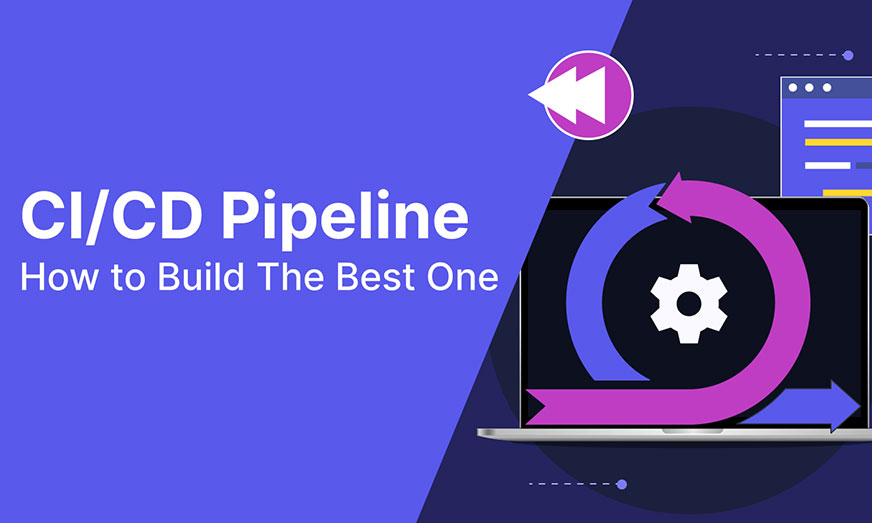In today’s software development lifecycle, speed without stability is a recipe for disaster. For DevOps engineers, team leads, and CTOs, building CI/CD pipelines that support rapid deployment means striking the right balance between automation, testing, and release control. A well-designed pipeline accelerates innovation while minimizing risk. This guide breaks down how to create CI/CD pipelines optimized for fast and safe delivery, with examples and best practices.
Core Components of a CI/CD Pipeline
Every robust CI/CD pipeline consists of several interconnected stages that ensure code is always in a deployable state:
- Source Control Trigger: The pipeline starts with a push to the main branch or a merge/pull request.
- Build: Source code is compiled, dependencies are resolved, and artifacts are created. Tools:
Docker,Maven,MSBuild. - Automated Testing: Unit, integration, and smoke tests validate new code. Frameworks:
pytest,JUnit,xUnit. - Packaging & Versioning: Docker images or build artifacts are tagged and pushed to registries.
- Deployment: Code is deployed to staging or production using blue/green or canary strategies.
- Monitoring & Rollback: Metrics and alerts monitor deployments, and rollbacks are prepared in case of failure.
Whether you’re using Jenkins, GitHub Actions, or GitLab CI, these components form the backbone of rapid and reliable delivery.
Key Metrics to Track
Building a pipeline isn’t just about automation—it’s about outcomes. Monitor these metrics to evaluate pipeline health and deployment efficiency:
- Time to Deploy: How long does it take for code to reach production after a commit?
- Change Failure Rate: What percentage of deployments result in a rollback or hotfix?
- Mean Time to Recovery (MTTR): How fast can the team recover from a failure?
These indicators help DevOps leaders fine-tune the pipeline and ensure it supports rapid, safe delivery.
Best Practices for High-Performance CI/CD
To make rapid deployment a reality, consider implementing the following CI/CD best practices:
- Use a Dedicated Staging Environment: Mirror your production environment to catch issues early.
- Enable Feature Flags: Deploy code safely by toggling features on/off without redeploying.
- Include Rollback Logic: Automate rollback processes using versioned Docker images or Git tags.
- Set Notifications and Approvals: Integrate Slack, Teams, or email alerts for deployments and failures.
- Ensure Test Isolation: Tests should be idempotent and not rely on shared state.
Automation is essential, but intelligent automation—combined with observability—is what makes rapid deployment sustainable.
Example: CI/CD Pipeline for a Node.js App
Here’s a simplified pipeline setup for a Node.js app using GitHub Actions:
name: Node CI/CD
on:
push:
branches: [ main ]
jobs:
build-and-deploy:
runs-on: ubuntu-latest
steps:
- name: Checkout code
uses: actions/checkout@v3
- name: Setup Node.js
uses: actions/setup-node@v3
with:
node-version: '18'
- name: Install dependencies
run: npm install
- name: Run tests
run: npm test
- name: Build Docker image
run: docker build -t myapp:${{ github.sha }} .
- name: Push Docker image
run: docker push myregistry/myapp:${{ github.sha }}
- name: Deploy to staging
run: ./scripts/deploy.sh staging ${{ github.sha }}This pipeline performs basic CI (install, test, build) and deploys to staging automatically. You can expand it with approval steps, production deployments, and monitoring hooks.
Visual Schema of a Standard CI/CD Pipeline
Below is a visual breakdown of a typical rapid deployment pipeline:
- Step 1: Code Commit → Trigger CI
- Step 2: Linting & Unit Tests
- Step 3: Build → Containerize
- Step 4: Push to Registry
- Step 5: Deploy to Staging
- Step 6: Integration Tests
- Step 7: Manual or Automated Promotion
- Step 8: Canary or Blue-Green Deployment to Production
- Step 9: Monitor → Auto-Rollback on Error
Conclusion: Build for Speed and Resilience
Creating a CI/CD pipeline that supports rapid deployment is not just about moving fast—it’s about moving smart. By investing in automated tests, reliable infrastructure, and clear rollback strategies, teams can deploy features with confidence. The key is incremental improvement: start simple, measure impact, and evolve the pipeline as your product and team mature. Whether your stack is Node.js, .NET, or Python, the core principles of CI/CD remain the same—automation, visibility, and continuous feedback.

Leave a Reply